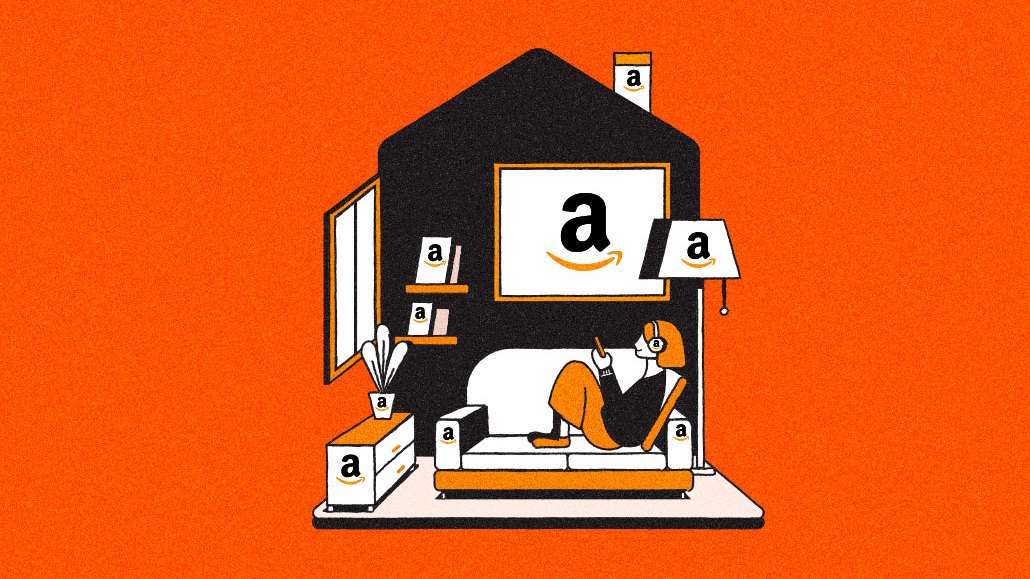Amazon’s ad business earned $9.5B last quarter, here’s how it’s pitching itself to advertisers

Amazon disclosed its Q3 earnings Thursday with its ads business generating $9.5 billion, contributing to an overall net sales total of $110.8 billion during the period.
While it’s clear Amazon is primarily an e-commerce outfit (and that won’t change any time soon) the fact that media-related sales increased 25% year-on-year in the quarter illustrates its growing prominence there.
Earlier this week, Keerat Sharma, director Amazon Marketing Cloud and ad tech solutions, spoke with Digiday about its data clean room offering — central to its strategy of accelerating its ads business. This conversation was in the run-up to its unBoxed conference where it unveiled a flurry of updates, including video ads, platform updates, plus a burgeoning partnership program.
Speaking separately with Digiday, Shiv Gupta, founder of educational service U of Digital, described how the company was effectively trying to reach further up the food chain of the advertising and marketing industry with a more holistic offering.
“They were a DSP [demand-side platform] for all intents and purposes for the last 10 years and with the acquisition of Sizmek, more investment in [its data clean room Amazon Marketing Cloud] AMC they’re trying to pivot and make their teams more like enterprise tech sellers than just point solution,” he said.
Even the most casual observer of the contemporary media and marketing space will be aware that one of the most prominent challenges marketers (and subsequently everyone else) faces is the decline of traditional identifiers as web browsers and mobile OS-providers go about closing that era of targeting internet users. And it was to this challenge, that Amazon representatives pitched their wares in a breakout session on the sidelines of unBoxed this week.
Amazon’s contextual play
A recent survey from IAB Europe illustrated that in the absence of scaled first-party data, marketers are increasingly turning to other forms of data enrichment — although third-party data is increasingly a pariah.
Here, Amazon Ads is pitching “aggregated signals” derived from its array of online services such as streaming and shopping, plus other behaviors on its properties.
“Signals generally refer to a wide range of consumer events and behaviors at particular moments in time and these can indicate interest, affinity … these can reflect the present and predicted future state of consumer behavior,” explained Jen Dorre, senior manager, Amazon DSP.
“We’re working on aggregating signals to generate inferences that enable ad serving on what we call an anonymous impression. These signals enable us to define ad addressability based on aggregated scale, first-party insights … these insights translate into more relevant opportunities to engage with an audience.”
Amazon Ads is offering this means of addressing audiences across Amazon properties as well as third-party websites with sales staff there honing their sales pitch to emphasize “accuracy” as opposed to “precision.”
The company is also working with third-party publishers to improve this means of helping advertisers find the audiences most likely to purchase their wares which effectively represents a shift away from deterministic targeting toward using probabilistic methods.
“We receive signals directly from publishers through Amazon publishing direct or APD,” added Dorre, explaining how that, in some cases, this can also include publisher-provided signals to increase adjustability on that specific media owner’s site.
“This includes guaranteed access to a certain set of potential parameters, and then page content that has a higher fidelity because we’re minimizing intermediaries in the ad inventory supply chain and this can better inform our modeling,” she explained.
LiveRamp Tie-up
Additionally, the company is also moving to help advertisers better calculate their ROI of spend within Amazon Ads by helping them with attribution modeling using AI, and is also opening up to letting advertisers import third-party IDs.
“With model conversions, we are helping advertisers account for conversions in cases where the link between an ad interaction or conversion event on Amazon.com is not available,” explained fellow presenter Joe Mitchell, head of go-to-market sales, Amazon Ads.
“Beyond first-party signals, we’re admitting third-party IDs into AMC in an effort to drive interoperability with advertisers’ audience, and measurement strategy of choice, we now support LiveRamp’s RampID in AMC,” he added. “If you use LiveRamp to manage audiences, you can use RampID as the key to join audiences with Amazon ad sales or customer analytics.”
So, with Amazon ranked as the third-biggest player in the market, and Meta (the second-largest player) currently experiencing rocky fortunes, some are left wondering how long, or if, it will take the e-commerce giant to close the gap?
More in Marketing

How the MAHA movement influenced food and beverage brands in 2025
The MAHA movement has come to stand for different things in different people’s eyes, depending on which initiatives they most closely follow.

Why Georgia-Pacific is turning its programmatic scrutinty to the sell side
The company is turning its attention to the sell side, zeroing in on the ad tech firms that move inventory for publishers — the supply-side platforms.

Future of Marketing Briefing: Why ‘just good enough’ is generative AI’s real threat to marketers
When characters and mascots are allowed to live inside generative systems, they stop being event-based and start becoming environmental.








